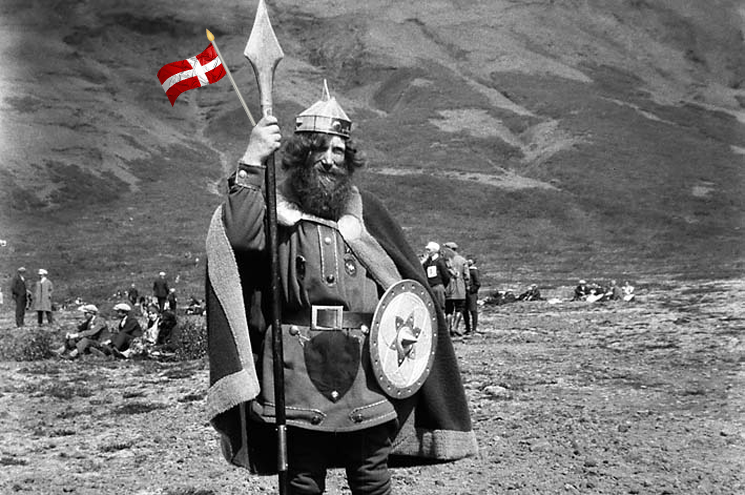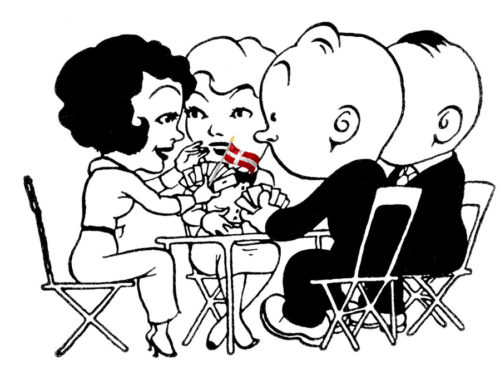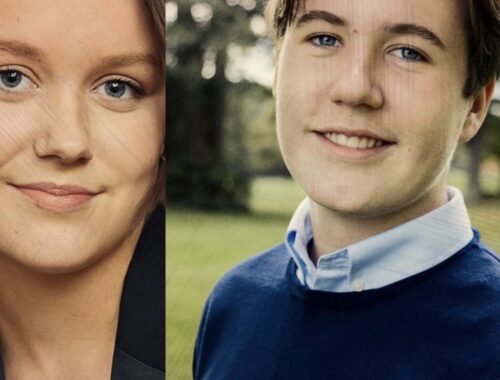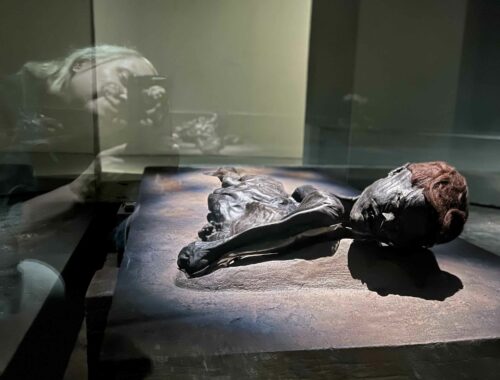I play a little game sometime when I look at Danish people. I imagine them as Danish Vikings. It’s easy now that big beards are in fashion on young men. Sometimes on the metro I’ll look up at the hipster guy playing with his iPhone next to me and imagine him wearing a big fur cloak. Maybe a rope belt, with a sword dangling from it.
I imagine him stepping off the boat in Newfoundland in the year 1000, freaking out the local American Indians.
Imagining Danish women as Vikings is a little harder. They don’t usually have the long braids or wear the big golden brooches that Viking ladies used to fasten their dresses. They don’t wear the headscarves the married women used to wear. Of course, you can still see plenty of headscarves in Denmark, but usually not on the Danes.
Choosing Viking-era plumbing
Anyway, the Danes love the Vikings, the same way the same way the French love the age of the Impressionists, and the British love the Second World War, and the Chinese love the 2008 Olympics. It was a time when their country was at the peak of power and influence.
If you go to the Denmark’s National Museum in Copenhagen, you can spend hours looking at Viking handicrafts: lots of golden horns, and rune stones. Danish kids learn a lot about the Vikings at school – even in kindergarten, they make Viking shields, and Viking swords, and try out Viking handicrafts. There’s various places around the country where the whole family can ‘live like a Viking’ for a week. That means Viking-era clothing, Viking-era food, and Viking-era plumbing.
Unsaid in all this is that Vikings were not just fun guys who wore horned hats to soccer games. The Norse pagans were a gruesome people, by modern standards. Their religion involved a lot of human sacrifice, including young children, particularly young girls. Viking is the Norse word for pirate. When they took off on a raid in England, or France, they stole everything they could, they attacked women and girls, they burned down people’s homes, they hacked off people’s limbs with axes. All that scary stuff you see in horror movies, with fake blood, the Vikings actually did. These guys were not cute and cuddly. They were villains. They were bad guys.
Of course, your Danish friends will tell you, the people you’ll meet in Denmark today are not the descendants of the Vikings. The Vikings, they’ll tell you, were the guys who left. They settled what is now England or France. The people you meet today in Denmark are the descendants of the people who didn’t want to go anywhere.
Tell them you want to work together
The current Danes are peaceful people. But there are still some things they have in common with the Vikings, and not just the way they scream bloody murder at you in the bicycle lanes.
For example, they still love the sea and the water. Denmark wins its Olympic medals for sailing, more than any other sport, followed by rowing and canoeing.
And they still think communally. The Vikings lived communally, in what were called ‘long houses’, with many families living inside. People lived together and worked together to survive the tough Scandinavian winters.
Understanding this can help you in your daily life in Denmark. If you want Danish people to do something, tell them you want to work together on it.
For example, Let’s work together to stop your kid from hitting my kid in the sandbox. Or Let’s work together to figure out the best way to share our corporate resources. That’s code for ‘I want a raise.’
Samarbejde is the Danish word for working together. Another good word, if you’re dealing with people on the left side of the political spectrum, is solidarisk. Solidarity. Some of the parents at my child’s school wanted to throw a fancy party which I didn’t want to attend or pay for, but it was decided that we all had to pay whether we attended or not, for reasons of solidarity. Communal thinking.
Buy Kay’s books about Denmark on Amazon, Saxo, Google Books, Apple Books, Barnes & Noble Nook, or via our webshop.
Image mashup copyright Kay Xander Mellish 2025
Read also:
Stories of a Salty: On Returning to Denmark After a Vacation





